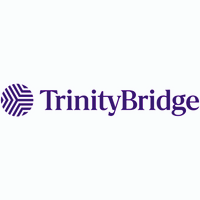What employers need to know about the lifetime and annual allowance

Currently set at £1,073,100, the LTA and will remain frozen until April 2026. It applies to the total of all pensions held by employees, including benefits in both defined benefit and defined contribution pension schemes. It does not apply to the state pension, however.
If the value of an employee’s LTA exceeds the limit at the point a check is undertaken, they should expect to pay tax – known as the lifetime allowance charge – on the excess. If excess money is taken as a lump sum, the charge is 55%. When the money is retained in the pension so that the individual can take an income from it, there is an immediate 25% tax charge on top of any income tax that needs to be paid.
The AA is the amount that employees can save tax-free across all their pensions on an annual basis. Employees who earn more than £200,000 a year may have more restricted tax relief, known as the ‘tapered annual allowance’. If employees exceed the annual allowance in any given year, and cannot carry forward allowance from the three previous tax years, they will need to pay a tax charge at their marginal rate of income tax on savings in excess of their annual limit.
In recent years, an increasing number of people have breached the limits for both the LTA and the AA, according to figures published by HMRC in June. The amount of tax charged for breaches of the LTA had soared to £283m for 2018/19, a 6% increase on 2017/18. Similarly, tax charged for AA breaches was up by 71% to £209 million in 2018/19, from 2017/18.
How to stay within the limits
To make effective use of their LTA and AA, employees must be able to calculate how much of both allowances remains available to them.
It can be difficult for employees with defined contribution pension schemes to ensure that they don’t breach the LTA, especially if they have several different pensions to keep track of, so they should ensure that they receive regular statements from all their pension providers. It may also be worth them seeking financial advice on what the value of their total pension pot is likely to be by the time they draw the benefits. In addition to any contributions made, their pot will grow in line with the value of its assets.
As they draw nearer to retirement age, employees can take actions to avoid breaching the LTA, including:
- No longer contributing to their pension and switching to alternative savings options instead.
- Taking their pension earlier than anticipated.
- Changing their investment strategy with the aim of producing more moderate returns.
- Making greater use of a partner’s LTA if their partner’s savings are well within the limit.
Employees with defined benefit pension schemes can usually calculate the likely total value of those pensions by multiplying their expected annual pension by 20, and adding the amount of any tax-free cash lump sum on top.
For the AA, when calculating how much of their annual allowance they’ve used up for their defined contribution pension schemes during a tax year, employees should add up all payments into those schemes, including their own contributions, their employer’s contributions, any additional contributions, and government tax relief.
For defined benefit schemes, the annual allowance is based on the capital value of the employee’s increase in their pension benefits over the tax year. They can ask their pension scheme provider for this information.
Protecting the lifetime allowance
Prior to 6 April 2016, the LTA was £1.25 million. Individuals may therefore be eligible to apply for protection against the subsequent reduction in the LTA if they meet the following criteria:
- Their pension savings were worth more than £1 million as of 5 April 2016; and/or
- Neither they nor their employer has added to their pension savings since 5 April 2016; or
- They had opted out of workplace schemes by 5 April 2016
If they meet the criteria, employees can apply for protection.
Alternative savings options
While pensions are a very important – and tax-efficient – means of saving for retirement, employees can also take advantage of other savings options. These include:
- Money can be saved into a Cash ISA, or a Stocks and Shares ISA, or a mixture of both. The funds saved are not subject to either Income Tax or Capital Gains Tax. There is a limit for how much can be saved on an annual basis – £20,000 in the current tax year.
- Lifetime ISAs. Up to £4,000 a year can be saved in a Lifetime ISA, with the government contributing a further 25% bonus on top of what the individual has already paid in. Lifetime ISAs are only available to adults under 40 and any contributions made constitute part of an individual’s annual £20,000 ISA allowance. Money cannot be taken out of the account until the saver is 60 years old, unless they are using it to buy their first home.
- Save as You Earn (SAYE) schemes. Employers who operate a SAYE scheme offer another way for their employees to save for retirement. A SAYE scheme enables employees to set aside some of their salary to buy shares in the company at a discounted price. Employees can save up to £500 a month under the scheme and get a tax-free bonus at the end of their three- or five-year contract.
Decision time
Employees must make a number of important decisions as they near retirement age, with the decision about when and how to take their pension being particularly significant. Employees who are at risk of breaching the LTA have some specific decisions to make in relation to that. In some cases, they will have other effective options for boosting their retirement savings and so it would make sense for them to try to stay within the LTA limit. In other cases, however, their personal and financial circumstances might mean that accepting the tax charge is the right choice for them.
This article is provided by Close Brothers Asset Management.
Supplied by REBA Associate Member, TrinityBridge Limited, formerly Close Brothers Asset Management
TrinityBridge has been delivering workplace financial wellbeing programmes to some of the UK’s best-known employers for over 55 years.







